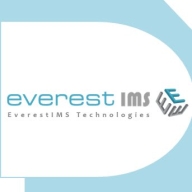

Azure Monitor and Infraon IMS are prominent competitors in the IT monitoring and management solutions category. Azure Monitor appears to have the upper hand due to its strong integration capabilities with Azure platforms and comprehensive application insights, which make it particularly beneficial for businesses heavily reliant on Azure's ecosystem.
Features: Azure Monitor integrates seamlessly with Azure platforms, offering customizable dashboards, and efficient alerting. It provides scalable data gathering functions, making it ideal for comprehensive infrastructure monitoring. Infraon IMS excels in network monitoring, role-based access, and offers granular insights, making it easy to use for non-technical users with its intuitive interface.
Room for Improvement: Azure Monitor needs to improve its support for hybrid deployments and automate features while enhancing integration with non-Azure environments. Infraon IMS could enhance its deployment flexibility, GUI, and AI capabilities. Additionally, improving its reporting and licensing models would benefit varied service levels.
Ease of Deployment and Customer Service: Azure Monitor is straightforward for existing Azure users deploying in public cloud environments but may be complex for newcomers. Microsoft's support is responsive but can be slow. Infraon IMS focuses on hybrid and on-premises setups, with customizable deployment options. Its technical support is efficient, though there is room for improvement in licensing and deployment details.
Pricing and ROI: Azure Monitor's pay-as-you-go model can be cost-effective for Azure-integrated businesses but expensive for heavy logging. Its pricing is sometimes unclear but more affordable than other platforms like Google Cloud. Infraon IMS offers competitive pricing favorable against alternatives like SolarWinds. Its flexible pricing model, paying only for used features, ensures reasonable ROI, especially for smaller setups.
| Product | Market Share (%) |
|---|---|
| Azure Monitor | 4.7% |
| Infraon IMS | 0.6% |
| Other | 94.7% |


| Company Size | Count |
|---|---|
| Small Business | 23 |
| Midsize Enterprise | 6 |
| Large Enterprise | 29 |
| Company Size | Count |
|---|---|
| Small Business | 3 |
| Midsize Enterprise | 2 |
| Large Enterprise | 3 |
Azure Monitor is a comprehensive monitoring solution offered by Microsoft Azure. It provides a centralized platform for monitoring the performance and health of various Azure resources, applications, and infrastructure.
With Azure Monitor, users can gain insights into the availability, performance, and usage of their applications and infrastructure. The key features of Azure Monitor include metrics, logs, alerts, and dashboards. Metrics allow users to collect and analyze performance data from various Azure resources, such as virtual machines, databases, and storage accounts.
Logs enable users to collect and analyze log data from different sources, including Azure resources, applications, and operating systems. Azure Monitor also provides a robust alerting mechanism that allows users to set up alerts based on specific conditions or thresholds. These alerts can be configured to notify users via email, SMS, or other notification channels. Additionally, Azure Monitor offers customizable dashboards that allow users to visualize and analyze their monitoring data in a personalized and intuitive manner.
Azure Monitor integrates seamlessly with other Azure services, such as Azure Automation and Azure Logic Apps, enabling users to automate actions based on monitoring data. It also supports integration with third-party monitoring tools and services, providing flexibility and extensibility.
Overall, Azure Monitor is a powerful and versatile monitoring solution that helps users gain deep insights into the performance and health of their Azure resources and applications. It offers a wide range of features and integrations, making it a comprehensive solution for monitoring and managing Azure environments.
Infraon IMS offers network monitoring with real-time dashboards, customizable GUIs, and integrated tools, supporting device management and workflow automation efficiently.
Infraon IMS delivers stable performance with features tailored for easy customization and detailed network management. Users benefit from real-time monitoring through role-based dashboards and integrated ticketing tools. However, improvements in reporting, GUI usability, and AI integration are needed. Challenges include monitoring non-IPBS devices and improving connectivity visibility. Users require seamless Infraon Desk integration, ease of device addition, and enhanced topology views.
What are the key features of Infraon IMS?In industries like IT infrastructure and data center management, Infraon IMS is utilized for network monitoring and managing key components such as leased lines and firewalls. Its capabilities aid diverse geographical locations in overseeing data centers, offering centralized monitoring and access to critical infrastructure.
We monitor all Cloud Monitoring Software reviews to prevent fraudulent reviews and keep review quality high. We do not post reviews by company employees or direct competitors. We validate each review for authenticity via cross-reference with LinkedIn, and personal follow-up with the reviewer when necessary.